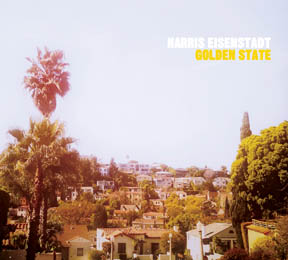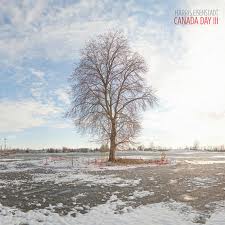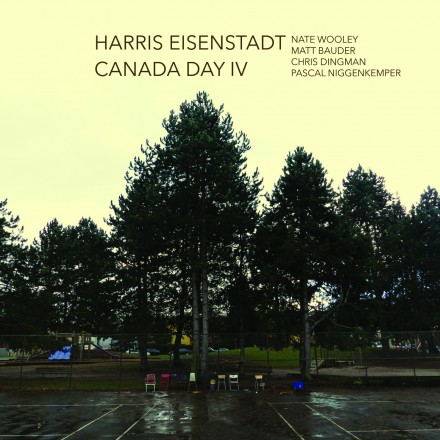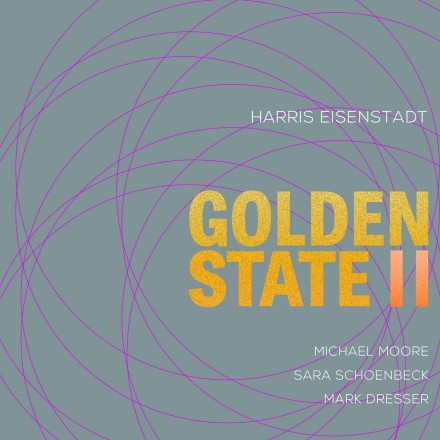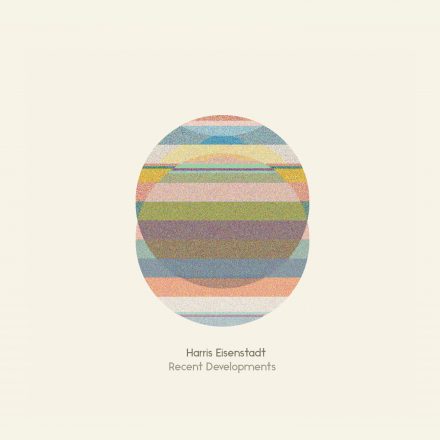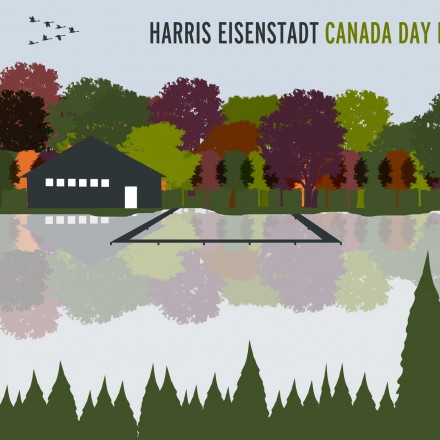Harris Eisenstadt
Golden State
SGL 1602-2“[Eisenstadt]’s perpetually building new ensembles to suit the variety of music he hears in his head…”
– Jim Macnie, Village Voice
Toronto-born, New York based drummer Harris Eisenstadt adds a different flavor to his impressive list of active projects with this intriguing bi-coastal quartet, his fifteenth record as leader since 2001. As Harris tells it, “Golden State continues a career-long interest in writing for orchestral instruments in chamber and improvising contexts that began with Fight or Flight, continued through Ahimsa Orchestra, The All-Seeing Eye + Octets, and Woodblock Prints. But unlike those records this is a batch of short compositions rather than one or two long-form pieces over an entire record…As to the group’s genesis, I was offered a short residency at CalArts fall 2012 by Leo Smith and my old mallet teacher David Johnson…I was thinking about sounds and textures that interest me, and musical personalities that interest me. Of course the combination of flute and bassoon timbres is fantastic…I’d wanted to put Sara and Nicole together in a small group for years – I’d heard them together in the Braxton 12tet and loved how they interacted. I got to know Nicole when we had orchestra pieces read on the same program in 2010-11. I’ve worked with Mark Dresser periodically over the last ten years. He’s such a singular force and makes any group he’s in sound huge. His unique vocabulary is a perfect foil for Sara and Nicole…Since Nicole had recently taken a job at UC Irvine and Mark was at UCSD, I decided it would be opportune to convene these guys…I wanted to devise a bunch of different pieces that took advantage of these musicians’ great skills as improvisers and interpreters – lots of off-kilter grooves, soloistic moments, group improvisations, 1, 2, and 3 part writing, sometimes interpreted strictly, sometimes freely.” Add one rehearsal, two gigs and a day in the studio, and the result is a highly rhythmic, wonderfully expressive, conversational music that takes chamber jazz further in directions suggested by Dolphy, Lateef, and the AACM:
“Out to Lunch was a major influence early on. Dolphy’s ideas about time and form and harmony and melody, all these elements of music, stretched but still discernible, that’s always attracted me, as well his musical spirit in general…As for Yusef Lateef, who I had the good fortune to work with in Adam Rudolph’s large ensemble about ten years ago, I first fell in love with Prayer to the East then Live at Pep’s – earlier Yusef records from the 50s/60s rather than later periods…The way Yusef welcomed not just orchestral instruments but also non-western instruments into a jazz group influenced me tremendously…When I refer to the AACM I’m talking about the first generation – primarily Wadada Leo Smith, Henry Threadgill and Anthony Braxton. Leo and Henry are my main sources of inspiration. As far as other influences, literature is an ongoing source of inspiration, not just for song titles, but also for ideas of narrative – linear and otherwise – that I try to bring to the music. The idea of non-programmatic narrative, abstract narrative, I find very appealing. Some of the incredible achievements in serial dramatic television of the last ten years also inspire me. And traditional music and dance of the world all influence how I want my music to be received – in its spirit, its rawness, its honesty…Not to be vainglorious, but the music I make is an offering…My hope is that this music touches people and makes them feel.”
“As to the overall rhythmic feel, there are lots of mixed meters, and there are spaces for a soloist or the group or a subset of the group to break free of the composed materials…Rhythmic counterpoint is a big part of all the writing I do, no matter how small the group…No matter how non-overt it may end up sounding, I’m always exploring the African concept of ostinato – meaning non-symmetrical repeating patterns rather than symmetrical rhythms…A clave that is of African and African Diasporic lineage has different weights, a call side to the rhythm and a response side. That has always attracted me, so a lot of these pieces have these kinds of vamps. Having said that, vamps are great things to break up and expand on. When you have someone like Mark Dresser playing the bass you want to encourage all these incredible variations and new directions that he’ll take vamps in – harmonically, melodically, rhythmically, texturally, all of the above. And that sort of sense of a multi-dimensional groove morphing at all times is what off kilter means, and refers to the bass lines too.”
Check out the video making-of here.
